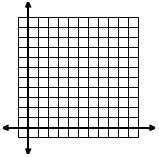|
Students often experience difficulty in Math 10 because
they have not made connections between formulas and
real life situations. The following experiments can be
done with students in middle years or as an introduction
to functions in Math 10. Some people might say the
Math 10 course is too intense and there is not time for
activities and games. These experiments can be
conducted in three periods. The advantage is that the
students better understand relations and make the
connections with their world so that abstract math such as
y = mx + b becomes more meaningful for them. This
allows students to understand rather than memorize
procedures.
Lesson One
(30 minutes) - Teacher directed (works best
when the teacher walks students in unison step by step
through this lesson). See Experiment 1.
Have students practice taking their pulse for 15 seconds
and multiplying by 4. Then have them run on the spot for
three minutes. They immediately take their pulse and
record. They continue to do this every minute. Students
then make the t-chart and the graph to observe that there
usually is a pattern as their pulse goes back to normal. If
they compare with friends they will usually see a
tendency towards a straight line; however the slope may
vary from student to student. (This is dependent on their
level of fitness).
Lesson Two
(60 minutes) 10 minutes - teacher directed,
50 minutes pairs at work stations. See Experiment 2.
Have water boiling in kettles before class starts.
Immediately pour 250 mL of water in Pyrex beakers (one
per pair). Students record the temperature. Explain to
the students that you will interrupt their activities every
ten minutes so that one student in the pair can record the
temperature of the water as it cools.
Students then rotate from station to station to conduct the
experiments. (Make sure that you have set up multiples
of each station so that all students have a place to work.
This is possible because the equipment is minimal).
Provide each student with a copy of the experiments so
that each one can record the data. Emphasize that they
will simply collect data at this point.
Once students have completed the data, ask them to
answer the remaining questions.
Lesson Three
Using an overhead of each activity, discuss with students
the results of their experiments. Identify those that tended
to have a pattern. Change the variables into x and y.
Students should begin to see what relations 'look like' in
the real world as well as make connections between math
and science.
|
